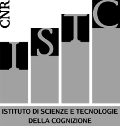GOAC - Goal Oriented Autonomous Controllers
The Autonomous Controller is an activity carried out for ESA ESTEC. The Goal-Oriented Autonomous Controller (GOAC) that results as an outcome of this activity is envisaged in the frame of future ESA missions wherein on-board autonomy is important. The GOAC is an autonomous controller using a sense-plan-act paradigm to provide increasing levels of autonomy for robotic task achievement. GOAC will generate plans in situ, deterministically dispatch activities for execution, and recover from off-nominal conditions.
Deep space and remote planetary exploration missions are characterized by severely constrained communication links, limited in communication window durations and data transmission rates. Under those circumstances, uncertainties from the environment or hardware anomalies cannot be efficiently addressed without some on-board autonomy allowing intelligent or fast decisions. This is not only because fast reaction is sometimes needed, but also because, without access to live data, decisions may be based on obsolete information, which could endanger the system or be useless.
Underlying GOAC is a rich representation that deals with metric time and resources necessary for dealing with planning and execution time uncertainty in dynamic environments. The lowest level of GOAC is a functional layer that is tightly integrated with a decisional layer at the highest level, both of which have a rich history with deployments in complex, real-world environments. The system’s higher levels of abstraction deal with long-term mission plans that are deliberative whereas lower levels of abstraction are increasingly reactive. The functional layer is purely reactive with fast reaction times necessary for failure recovery and command dispatch. Additionally a Verification and Validation system ensures correctness-by-construction of the functional layer, with respect to properties such as deadlock-freedom.
The resulting system will be a state-of-the-art, robust, and verifiable autonomous controller that will allow adjustable levels of autonomy. Moreover it will allow personnel to focus on what they want the robotic platform to do instead of laboriously working on how to satisfy science and engineering goals. The CNR group has provided an APSI-Based Timeline-based Planner (called AP2) and an APSI Deliberative Reactor that facilitates the dialogue between AP2 and the T-REX multi-reactor executive.

